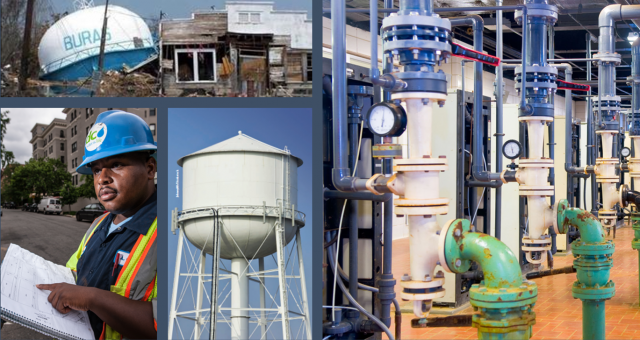Water Security
EPA has a responsibility to improve the ability of water utilities to prevent, prepare for, and respond to water contamination that threatens public health. Disasters, whether human-made or naturally occurring, can impact the ability of water and wastewater utilities to function, including the potential disruption of drinking water supplies to municipalities.
To support disaster preparedness, EPA develops modeling tools that aid the design and operation of water and wastewater systems in a way that decreases their vulnerability to disasters.
Research Topics

Drinking water distribution systems, household plumbing, and appliances are increasingly vulnerable to interruption in service from a terrorist attack, an industrial accident, an extreme weather event, and aging water infrastructure. EPA’s research has developed tools and technologies to assist water infrastructure systems in identifying, evaluating, and improving their resilience to human-made or natural disasters, whether by changing operations or by redesigning and retrofitting the infrastructure. These system-specific tools need to be tested and adapted to be applicable for wastewater, stormwater, source water, and water reuse applications.
- Water Infrastructure Resilience
- Water Infrastructure Decontamination
- Home Plumbing Decontamination
- Water Treatment and Waste Management
- Stormwater Management
Available Tools
- Water Modeling Tools for Decision Support
- Water Network Tool for Resilience (WNTR)
- Threat Ensemble Vulnerability Assessment – Sensor Placement Optimization Tool (TEVA-SPOT)
- CANARY for Contamination Event Detection
- EPANET Multi-Species eXtension (MSX)
- EPANET Real-Time eXtension (RTX)
- Water Security Toolkit
See EPA's Science Models and Research Tools Search for a full listing of available tools.
Specialized Facilities
Featured Science Matters Articles
EPA Researchers Partner with WaterStep to Deliver Clean Water During Emergencies
Water Security Test Bed in Idaho
Water Network Tool for Resilience Helps Prepare Drinking Water Utilities for Natural Disasters
